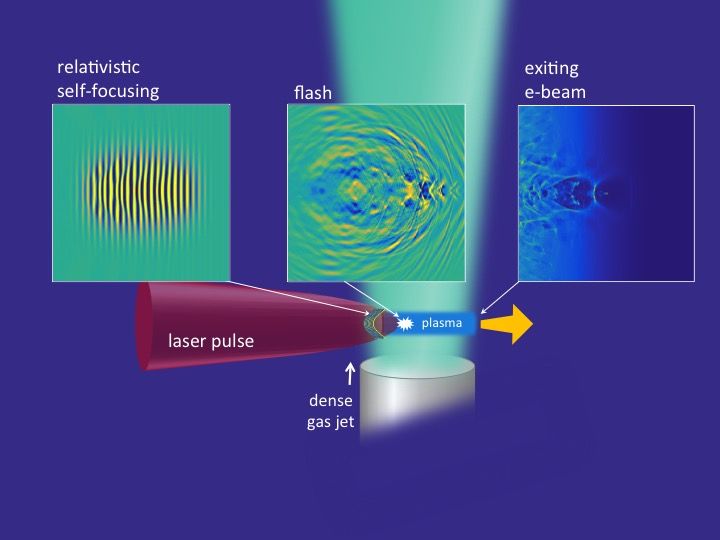Circa 2015
Conventional particle accelerators are typically big machines that occupy a lot of space. Even at more modest energies, such as that used for cancer therapy and medical imaging, accelerators need large rooms to accommodate the required hardware, power supplies and radiation shielding.
A new discovery by physicists at the University of Maryland could hold the key to the construction of inexpensive, broadly useful, and portable particle accelerators in the very near future. The team has accelerated electron beams to nearly the speed of light using record-low laser energies, thus relieving a major engineering bottleneck in the development of compact particle accelerators. The work appears in the November 6, 2015 issue of the journal Physical Review Letters.
“We have accelerated high-charge electron beams to more than 10 million electron volts using only millijoules of laser pulse energy. This is the energy consumed by a typical household lightbulb in one-thousandth of a second.” said Howard Milchberg, professor of Physics and Electrical and Computer Engineering at UMD and senior author of the study. “Because the laser energy requirement is so low, our result opens the way for laser-driven particle accelerators that can be moved around on a cart.”
